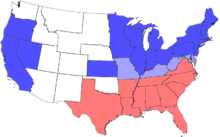Andersonville was a prison for Union soldiers owned by the Confederate military. It was meant to hold up to 10,000 prisoners but it ended up holding more than 32,000. The site of Andersonville was chosen because it was by a stream and in a remote area. Even though they had a stream, the confederate troops were camped out up the river so when they dumped stuff in the river it made the water so the prison couldn't use it. 13,000 of the people who were living there died because of malnutrition, diseases, contaminated water, exposure and overcrowding. When someone would die they would be stripped and others would take their clothes. Sometimes people would strip them even before they died and leave them just laying there. Every morning the wagon would come and get all the dead bodies and take them to the cemetery, then later in the afternoon around 4 o'clock they would get their rations out of the same wagon. The prisoners did not get very much food and sometimes it wasn't cooked so they traded if they didn't have wood to cook it. Another one of their problems was the prison used all the wood in the woods nearby so everyone just got a piece of wood the size of a match and that was all they got. Sometime they would get no match to cook their food so the prisoners ate it raw. They also didn't have a real place to sleep so they would make their own shebangs which was what they called their shelters. There was no real way for them to get clean so they would sometimes substitute sand for soap. Sometimes the prisoners tried to escape but they were shot by guards who were guarding the fence. If the prisoners got in trouble then Henry Wirz-the commander of the prison- would hang them by their thumbs for punishment. After the war was over Henry Wirz was arrested and charged for murder and impair the health of the soldiers so they couldn't fight. His sentence was hanging. He was hanged on November 10, 1865.

This is Andersonville during the Civil War.
http://en.wikipedia.org/wiki/File:Andersonville_Prison.jpg

This is the Andersonville cemetery today.
https://blogger.googleusercontent.com/img/b/R29vZ2xl/AVvXsEgM31s3fSFt52aCL8PVlPkH6QZwBD84zn_W0JuaRAEyTatop0IPR5TRgmR5yKixnW6Nn4CzusrHOmCzKteNq2a1dJY3vLr1f6MPhbXAMCTLIUm9zKmy8XQS5CdS-RfOPjHRk9x9vBoB260/s1600-h/andersonville03_9.jpg

This is Henry Wirz the commander of Andersonville who was killed.
http://en.wikipedia.org/wiki/File:Henry_Wirz_photo.jpg








